CrossFit Sit-Up Tutorial: Master Form for Core Strength & Endurance
Master CrossFit sit-ups with our comprehensive tutorial. Boost core strength, enhance endurance, and perfect your form for a fitter, stronger you!


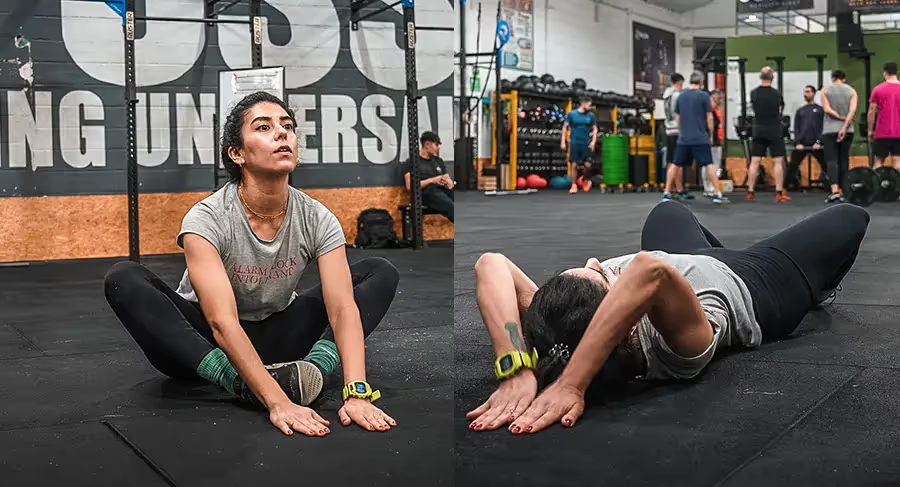
Master CrossFit sit-ups with our comprehensive tutorial. Boost core strength, enhance endurance, and perfect your form for a fitter, stronger you!


Sit-ups are a fundamental exercise that can significantly contribute to your overall fitness.
Whether you're a beginner just starting out or a CrossFit athlete wanting to get that rock solid core, this guide will help you master sit-ups.
In the ever evolving world of fitness the humble sit-up might seem overshadowed by more attention-grabbing exercises. Yet, beneath its simplicity lies a powerhouse of benefits that make sit-ups an indispensable component of any training programme.
Sit-ups fall into the category of bodyweight exercises commonly used in calisthenics.
Calisthenics refers to a form of exercise that uses the body's own weight for resistance, and it typically involves rhythmic movements and a variety of exercises to develop strength, flexibility, and endurance.
Sit ups primarily target the muscles of the abdominal region, including the rectus abdominis, obliques, and transverse abdominis.
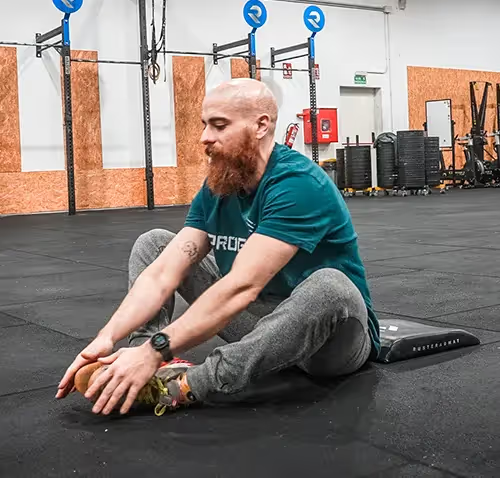
Calisthenic exercises like sit-ups are popular for their simplicity, effectiveness, and the minimal equipment required, making them accessible to a wide range of people.
Here's why you should not underestimate the value of this classic exercise:
Sit-ups are renowned for their ability to target and strengthen the core muscles. Your core serves as the epicenter of your body's stability, playing a crucial role in virtually every movement you make.
By regularly incorporating sit-ups into your routine, you engage the rectus abdominis, obliques, and transverse abdominis, collectively fortifying your core and enhancing overall stability.
Desk jockeys watch out, sit ups can seriously help you. The muscles strengthened during sit-ups contribute significantly to better posture.
As your core becomes stronger, it provides essential support to your spine, reducing the likelihood of slouching or adopting poor posture habits.

This, in turn, can alleviate back pain and contribute to a more confident and upright stance.
One of the standout advantages of sit-ups lies in their versatility, and they offer a spectrum of progression options.
From the fundamental crunch and butterfly to more advanced variations like GHD sit-ups, you can tailor the intensity to your fitness level and progressively challenge yourself as you grow stronger.
While there are undoubtedly more entertaining exercises out there, sit-ups remain unparalleled in their ability to isolate and engage the abdominal muscles.
This targeted activation is essential for sculpting and defining the midsection, contributing to the coveted "six-pack" appearance for those who aspire to visible abdominal muscles.
Although don’t rely on sit-ups solely if you are dreaming of a six pack, the majority of the work you will need to do will be in the kitchen for this goal!
Another compelling reason to incorporate sit-ups into your routine is their accessibility. You can literally do them anywhere. No need for equipment, all you need is a floor and time.
Set yourself a daily goal to incorporate sit-ups into your routine, you cultivate mental endurance,
enhancing your ability to stay committed to your fitness goals and overcome challenges.
Try the 1 a day challenge, start on January 1st and do one more sit up every day until the end of the year. If you do that you will have completed 67,179 sit ups in a year!
A strong core, fostered through regular sit-up practice, serves as a solid foundation for more complex movements in CrossFit, contributing to your overall athletic performance.
In conclusion, while the allure of flashy, high-intensity workouts is undeniable, the steadfast sit-up deserves a place in your fitness repertoire. Its benefits extend far beyond the surface, offering a holistic approach to core strength, posture improvement, and mental resilience.
So, the next time you find yourself questioning the value of sit-ups, remember that sometimes the most straightforward exercises harbor the most profound advantages.
For those new to CrossFit or fitness in general, mastering the basics is crucial.
Proper form is key: Maintain a neutral spine and engage your core throughout the movement.
This not only maximizes the benefits but also prevents injuries.
Arm position: In a traditional sit-up, individuals often cross their arms over their chest or place their hands behind their head.
Full range of motion: The focus is on achieving a full range of motion, lifting the upper body off the ground and coming as close as possible to the thighs.

Speed and repetitions: Traditional sit-ups are typically performed at a controlled pace, with an emphasis on proper form. They may be done for a specific number of repetitions or within a prescribed time frame.
Arms extended: In CrossFit sit-ups, it's common to see a variation where the arms are extended forward as the individual sits up. This adds an extra dynamic to the movement and engages the shoulders and arms more.
Butterfly sit-Ups: CrossFit often incorporates a variation called butterfly sit-ups. In this version, the feet are together, and the knees open.
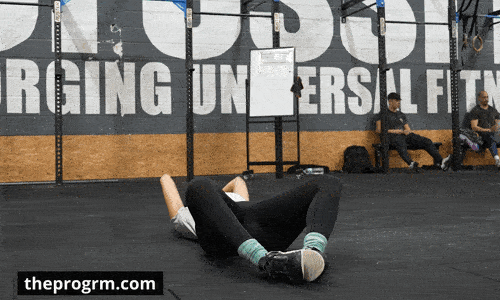
● Lie down: Begin by lying on your back on a comfortable, flat surface. Use an ab mat or towel for additional support if you need it.
● Open your hips and place your feet together with your knees touching the floor.
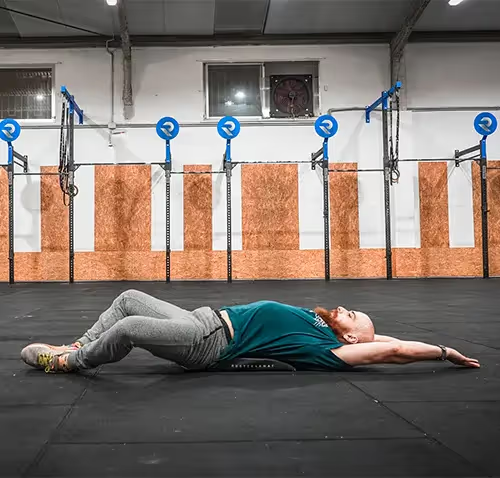
● Neutral spine: Ensure your spine is in a neutral position by pressing your lower back into the mat. This helps protect your lower back and maintains proper alignment.
● Engage your core: Tighten your abdominal muscles. Imagine pulling your belly button towards your spine to engage the core muscles.
● Initiate the movement: With control, begin to lift your upper body off the ground by using your abdominal muscles. Focus on leading the movement with your chest, not your neck.
● Full range of motion: Continue the movement until your torso is in a vertical position, or your chest is close to your thighs.
● To complete the sit up, you must tap the floor with your hands, many coaches will insist on this as without it it is a no-rep! Make sure you touch the floor in front of your feet.
● Lower with control: Slowly lower your upper body back to the starting position. Don’t just collapse onto the ground. Maintain control throughout the descent.
● Repeat the movement: Perform the sit-up for the desired number of repetitions. As you become more proficient, you can gradually increase the intensity or explore variations, such as adding twists or using an incline.
● Coordinate breathing: Inhale as you lower your body, and exhale as you lift your upper body. This coordinated breathing helps stabilize your core and enhances the effectiveness of the exercise.
● Start slow: If you're just beginning, don't push yourself too hard initially. Start with a manageable
number of reps and gradually increase as your strength improves.
● Quality over quantity: Focus on maintaining proper form rather than doing a high number of
repetitions. Quality sit-ups are more beneficial than rushed ones.
● Avoid neck strain: Avoid pulling on your neck. The emphasis should be on the core muscles doing
the work.
The ab mat adds comfort and support to your sit-ups. Position the Ab Mat under your lower back, to create a gentle curve that supports your spine. You will be able to perform sit-ups as usual.
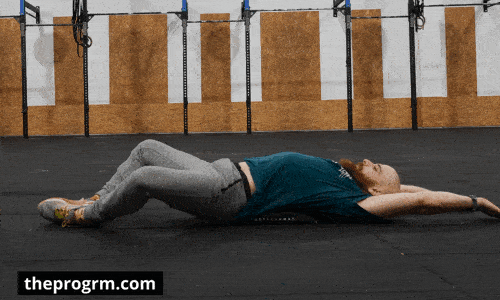
Sit-ups are a straightforward exercise that can be performed with little to no investment. Your focus should remain on maintaining proper form, engaging core muscles, and gradually progressing in intensity. In short, no, you do not need any gadgets… but you might want to try out a GHD machine if you have access to one.
If you are experiencing any pain doing sit-ups STOP!
Check your form, is your spine pushed into the floor?
Do you have any neck or back issues? There are other core exercises which you can do if sit-ups are causing you discomfort.
For those who have mastered the basics and are ready to take their sit-ups to the next level, consider the following tips:
● Increase intensity: Introduce variations or add resistance to make the exercise more challenging.
● Mix it up: Incorporate different types of sit-ups into your routine. GHD sit-ups, for example, target your lower abs and hip flexors, providing a well-rounded core workout.
The GHD (Glute Ham Developer) Machine, uses the athlete’s own bodyweight to develop strength in the glutes, hamstrings, calves and core. Not every gym has one, but if your local gym does, then make sure to get some guidance from a coach regarding the set up before you hop on!
Whether you're just starting your CrossFit journey or looking to enhance your routine, mastering sit-ups is a valuable asset to your core strength especially if you are traveling or have limited access to gym equipment.
Don’t forget to focus on proper form, and gradually increase reps and intensity.
For more tailored fitness plans and guidance, check out The Progrm—your ultimate destination for comprehensive CrossFit programming.